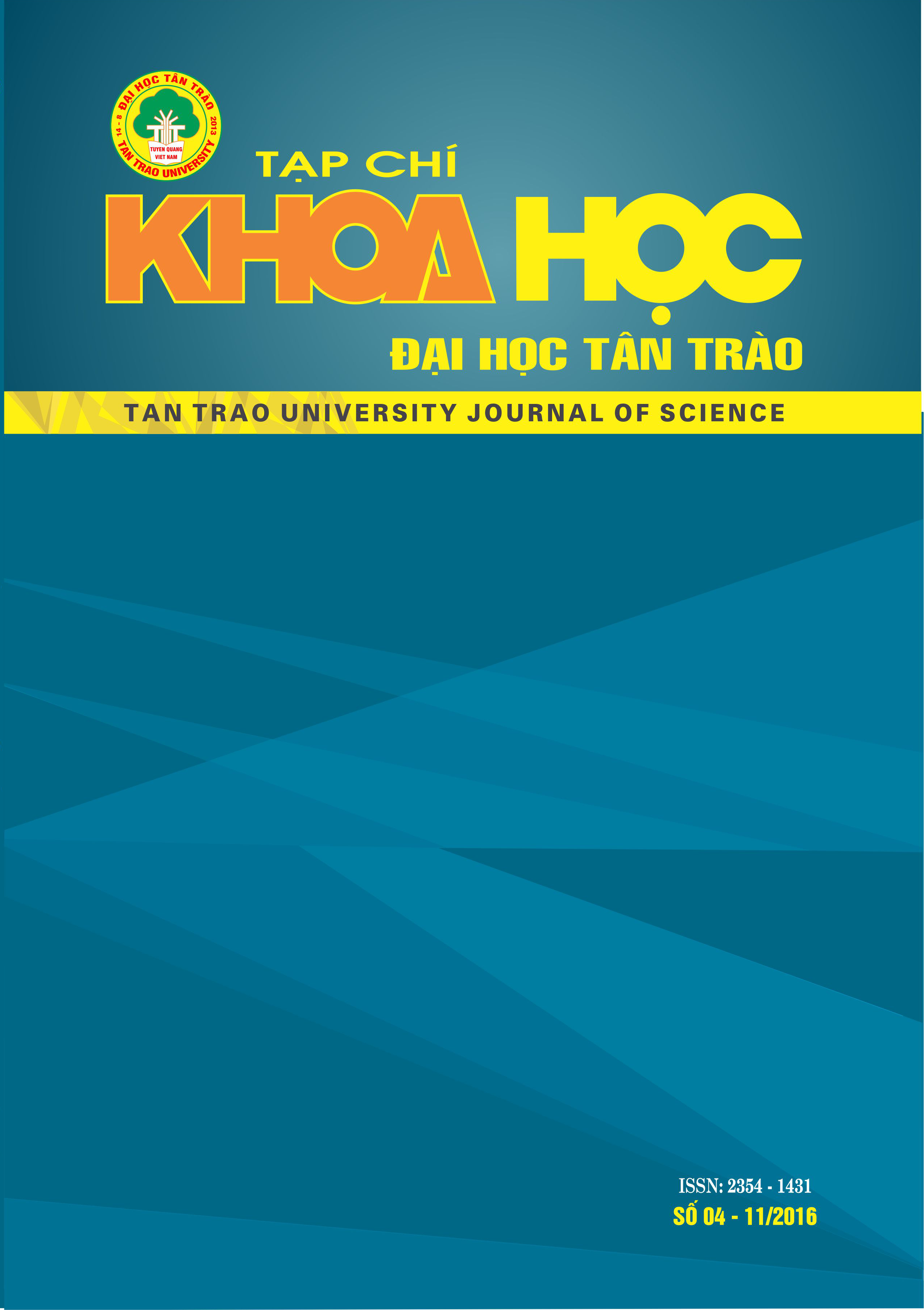ĐÁNH GIÁ TÍNH DỄ BỊ TỔN THƯƠNG DO BIẾN ĐỔI KHÍ HẬU TRÊN ĐỊA BÀN XÃ CAM ĐƯỜNG, THÀNH PHỐ LÀO CAI, TỈNH LÀO CAI
DOI:
https://doi.org/10.51453/2354-1431/2016/144Từ khóa:
Biến đổi khà háºu; Cam ÄÆ°á»ng; cá»™ng đồng; thiên tai; tÃnh dá»… bị tổn thÆ°Æ¡ngTóm tắt
Biến đổi khí hậu đã, đang và sẽ xảy ra làm tăng cường độ, tần suất của các thiên tai cũng như các hiện tượng thời tiết cực đoan từ đó làm trầm trọng thêm các áp lực cho thành phố Lào Cai nói chung và xã Cam Đường - một trong năm xã ngoại thị của thành phố Lào Cai nói riêng. Lũ quét và sạt lở đất là hai loại hình thiên tai chính xảy ra trên địa bàn xã trong những năm qua. Ngoài ra, người dân trên địa bàn xã còn phải đối mặt với một số loại hình thiên tai khác: gió lốc, rét đậm rét hại, nắng nóng kéo dài... ảnh hưởng không nhỏ đến đời sống sinh hoạt và sản xuất. Nhóm cộng đồng sản xuất nông nghiệp và tái định cư là hai nhóm đối tượng chính nằm trong diện bị tổn thương nhiều nhất do tác động của biến đổi khí hậu. Hai nhóm đối tượng này chủ yếu là những hộ gia đình có thu nhập thấp, hạ tầng cơ sở còn yếu kém, nên khả nảng thích ứng với biến đổi khí hậu còn rất hạn chế. Mức độ dễ bị tổn thương của các cộng đồng và các hệ thống hạ tầng của xã Cam Đường hiện tại và trong tương lai không chỉ phụ thuộc vào cường độ và tần suất của các loại hình thiên tai mà còn phụ thuộc vào nhiều yếu tố khác như: Mức độ hiểu biết và nhận thức; thu nhập của người dân; chất lượng cơ sở hạ tầng, các dịch vụ xã hội; sự thay đổi về cơ cấu dân số, các thành phần kinh tế.
Tải xuống
Tài liệu tham khảo
1. Cục Thống kê tỉnh Lào Cai (2015), Niên giám thống kê tỉnh Lào Cai năm 2014, Nxb Thống kê;
2. Nguyễn Đức Ngữ, Nguyễn Trọng Hiệu (2004), Khí hậu và Tài nguyên khí hậu Việt Nam, Nxb Nông nghiệp;
3. Sở Tài nguyên và Môi trường tỉnh Lào Cai (2012), Kế hoạch hành động của tỉnh Lào Cai triển khai thực hiện chương trình mục tiêu quốc gia ứng phó với biến đổi khí hậu;
4. UBND tỉnh Lào Cai, Báo cáo tình hình thực hiên chính sách pháp luật về phòng, chống BĐKH trên địa bàn tỉnh Lào Cai năm 2014;
5. Viện Khoa học khí tượng thủy văn và Môi trường (2011), Tài liệu hướng dẫn đánh giá tác động của biến đổi khí hậu và xác định các giải pháp thích ứng, Nxb Tài nguyên - Môi trường và Bản đồ Việt Nam
Tải xuống
Đã Xuất bản
Cách trích dẫn
Số
Chuyên mục
Giấy phép

Tác phẩm này được cấp phép theo Giấy phép Quốc tế Creative Commons Attribution-ShareAlike 4.0 .
Bài báo được xuất bản ở Tạp chí Khoa học Đại học Tân Trào được cấp phép theo giấy phép Ghi công - Chia sẻ tương tự 4.0 Quốc tế (CC BY-SA). Theo đó, các tác giả khác có thể sao chép, chuyển đổi hay phân phối lại các bài báo này với mục đích hợp pháp trên mọi phương tiện, với điều kiện họ trích dẫn tác giả, Tạp chí Khoa học Đại học Tân Trào và đường link đến bản quyền; nêu rõ các thay đổi đã thực hiện và các nghiên cứu đăng lại được tiến hành theo cùng một bản quyền.
Bản quyền bài báo thuộc về các tác giả, không hạn chế số lượng. Tạp chí Khoa học Tân Trào được cấp giấy phép không độc quyền để xuất bản bài báo với tư cách nhà xuất bản nguồn, kèm theo quyền thương mại để in các bài báo cung cấp cho các thư viện và cá nhân.
Mặc dù các điều khoản của giấy phép CC BY-SA không dành cho các tác giả (với tư cách là người giữ bản quyền của bài báo, họ không bị hạn chế về quyền hạn), khi gửi bài tới Tạp chí Khoa học Đại học Tân Trào, tác giả cần đáp ứng quyền của độc giả, và cần cấp quyền cho bên thứ 3 sử dụng bài báo của họ trong phạm vi của giấy phép.






